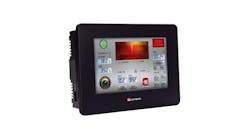A successful control-system installation in a hazardous area, such as those containing flammable gas or powders, isn’t just about following an electrical schematic that details field-device connections to rows of intrinsically safe barriers. Industry best practices start with an equipment-requirement document and a control-system-design-specification document. Whether these documents are combined or separate, the point is that the requirements and how the design will be implemented must be documented before any lines of the schematic are put on paper.
The first time these documents are created can be quite a long and involved process, but it still must be done. There are many national and international standards to follow, as well as ways for the control system to operate safely in a hazardous area. Fortunately, much of the documentation created can be reused as a template for future hazardous-area projects, and it will help ensure things are done right the first time. That should always be the goal.
To start, equipment requirements define “what” is needed, not “how” it will be done. They document, for example, requirements that must be met during acceptance testing, for example. Short, focused sentences about each individual requirement are a must. Start with the area classification, such as the control system must be designed to operate in a Class I, Div. 1 hazardous area. The control system must follow hazardous area classifications in NFPA 497 and/or the International Electrotechnical Commission (IEC) 60079 Explosive Atmospheres. Add requirements related to these standards, such as all field devices connected to the control system will be marked as suitable for use in the hazardous area. And there are many more, so be sure to document each equipment requirement as a separately numbered item.
The equipment specification is also a place to document preferred methods to use in hazardous areas. An example of this is the control system must be installed in an explosion-proof housing to prevent combustible gases or powder from contacting internal, energy-producing control components. Since these explosion-proof enclosures are heavy, bulky and difficult to drill and tap holes in for pushbuttons and conduit connections, the equipment requirement can document an easier or preferred method. For example, the control enclosure will include a purged/pressurized system, suitable for use in the hazardous area classification, to remove and prevent accumulation of explosive, damaging and caustic gases. Two of many additional requirement can document that power to the control enclosure will be safely removed if the purge pressure is lost and that control enclosure exterior temperature must not exceed automatic ignition temperatures listed on NFPA 497 for Class I, Div. 1, Group D atmosphere.
Another requirement, often a preference, all field I/O devices will be connected to intrinsically safe barriers, and another is the use of a standard manifold bank mounted in a purged enclosure with bulkhead air fittings instead of using explosion-proof, field-mounted solenoid valve banks.
Continue documenting additional equipment requirements on what is required. The hazardous-area specifications have countless requirements, and all relevant ones should be included in the document. These requirements are used to create the design specification and can also be edited as needed to create an acceptance-testing procedure, which is critical to document and pass before equipment enters production in a hazardous area. With the requirements documented, it is time to document how the requirements will be met.
The “how” is covered in the control-system design specification, which documents the design itself. This includes specific part numbers and details needed to create the control-system design by defining how to specify devices, how to build and how to wire it. While the equipment-requirements document simply lists that an enclosure will be purged and that intrinsically safe devices will be used, the design specifications provide specific technical information needed to specify components or the actual part numbers and how to wire the system.
Starting with the main control panel, the specification will call out the Class I, Div. 1 purge system provides Type X purge functionality from a brand-name manufacturer, for example. Another numbered line item in the specification could define that the control enclosure will be NEMA 4X, stainless-steel construction. These “how” details should come right out of the NFPA 70, NFPA 497 and related standards with information added for use in the design.
Suppliers of hazardous-area control products also have much to say about specifications, such as rigid conduit will run between control enclosures, and an aluminum sealing fitting with ¾-inch FNPT ends will seal the conduit within 18 inches of where it enters the explosion-proof enclosure.
To ensure a proper and safe installation, the control-system design specification should detail how intrinsic-safety circuits are wired if there use are a requirement. To start, all intrinsically safe wiring will be light blue to clearly highlight its special purpose. All intrinsically safe wiring is isolated from non-intrinsically safe circuits by at least 2 inches.
Continue to define and detail how the system will be designed to meet requirements. Whether designing the system yourself or using integrators, consultants, OEMs or manufacturers, get the requirements and specifications documented in detail, even for non-hazardous areas, and only that, build it.






